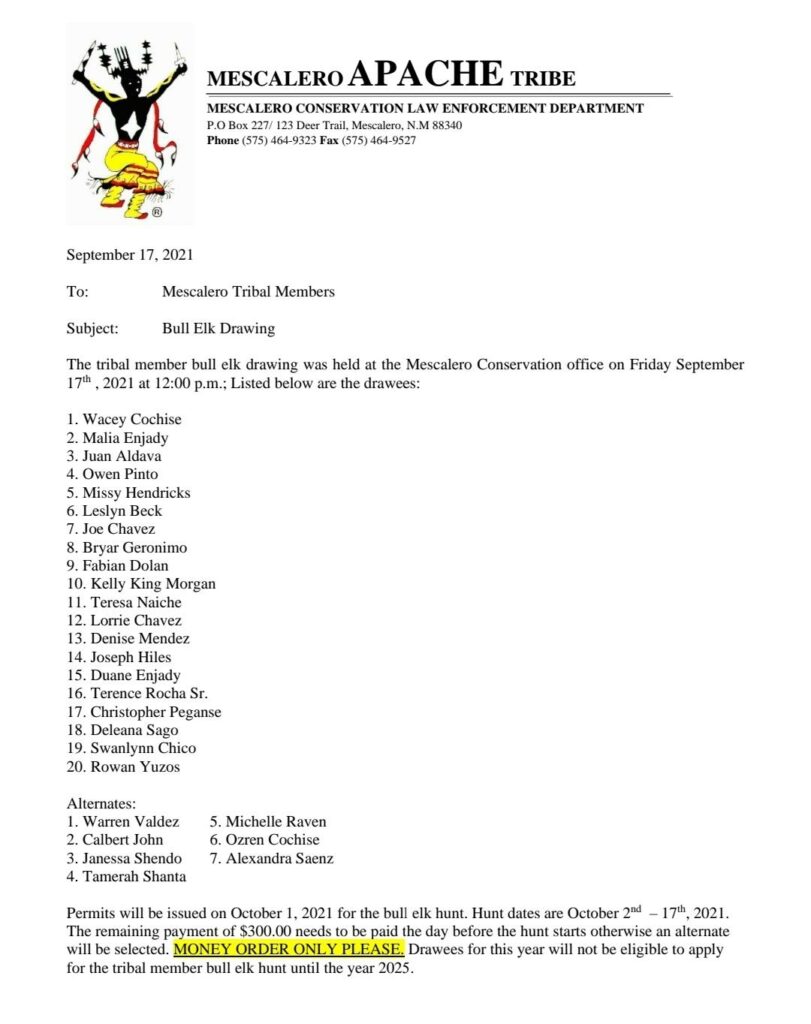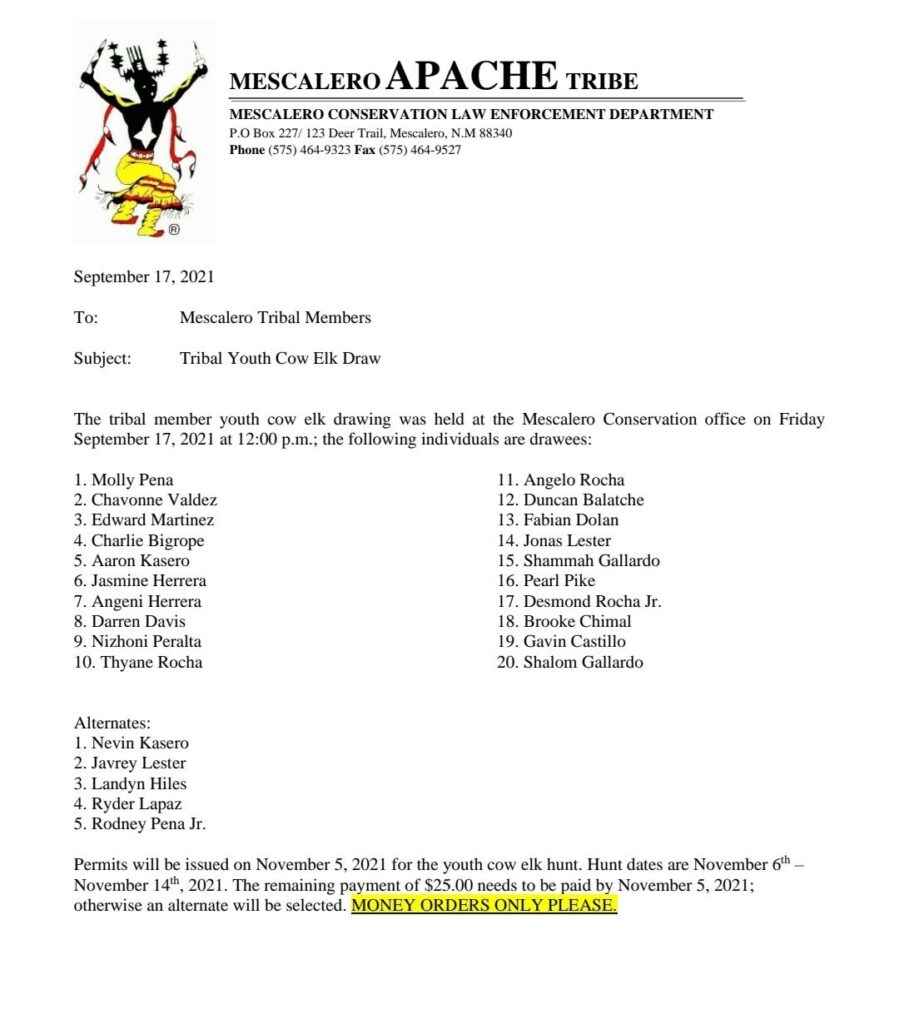



Drawing for:
Is TODAY, September 17, 2021 at NOON at the CONSERVATION OFFICE.
Questions? Contact the Conservation Office at 575-464-9323
Good luck!
The 2021 Tribal Bull Elk application Deadline is this Thursday September 16, 2021 with the drawing on Friday September 17, 2021 at the Tribal Offices at 12:00 noon.
Also, the Tribal Youth Hunts (Bull Elk, Cow Elk and Deer) has the same Deadline September 16, 2021 for applications and drawing on Friday September 17, 2021 after the Bull Elk Drawing.
Due to the Conservation Office social media page being down they will NOT be sharing a live version of the draw.
Prices:
Hunter Safety Certificate is required for youth hunts
Questions?? Contact the Conservation Office at 575-464-9323 or fax 575-464-9527
Email: eornelas@mescaleroapachetribe.com or tcervantes@mescaleroapachetribe.com for applications.
Job Description: Buffet set up, Service, and Breakdown; Cleaning Dining Room; Sweeping, mopping, throwing away trash, wiping chairs and table; stocking food and supplies, brewing tea.
Positions start at $15/HR
Unlimited hours and overtime for 1st month of employment
Contact:
Kelly at 859-797-6547 or email: collins@morganchasemanagement

Dear Tribal Community Partners,
We are writing to share good news with you regarding a critical change in policy related to how we count disaster payments in terms of income and resources for our Supplemental Security Income (SSI) Program. Financial assistance provided from Tribal Governments to assist Tribe members due to COVID-19, funded by the Coronavirus Relief Fund or Coronavirus State and Local Fiscal Recovery Funds and the American Rescue Plan Act of 2021 (ARPA), do not count against Supplemental Security Income (SSI) eligibility and payment amounts.
The Social Security Administration (SSA) is committed to serving the American Indian, Alaska Native (AIAN) communities as we navigate through these unprecedented times. We ask that you help us spread the word and alert Tribal communities about COVID-19 related assistance issued by Tribal Governments and our guidance on how we treat those payments for SSI purposes. For more information on the effect of COVID-19-Related Financial Assistance on SSI Income and Resources, check the publication: Spotlight on American Indians and Alaska Native Provsions posted on the AIAN webpage (www.ssa.gov/people/aian).
If you are aware of Tribal payment(s) that may have been incorrectly counted as income or resources among Tribal communities, please advise them to call their local Social Security office with any questions. Tribal members can speak with a representative between 9:00 am – 4:00 pm, Monday through Friday. We provide local office phone numbers conveniently online with our Social Security Office Locator.
While so many continue to be affected by COVID-19, we want to let you know that SSA remains committed to providing vital services. Despite the challenges government and businesses face at this time, we want Indian Country to know that you can conduct most Social Security matters online or over the phone.
Nancy A. Berryhill
Tribal Consultation Official
Acting Deputy Commissioner for
Analytics, Review and Oversight
Reneé Ferguson
AIAN Executive Lead
Assistant Regional Commissioner
Thank you for your cooperation.
Mescalero Dispatch number 575-464-4479 is experiencing issues.
Mescalero Dispatch has a cell phone number which can be utilized for NON-EMERGENCY contact.
This number can be utilized to contact dispatch for fire-rescue, conservation and law enforcement needs.
If emergency situation, call 911, which is still operational.
Thank you for your cooperation.

For more information contact Dorlynn Simmons at 575-430-1012.